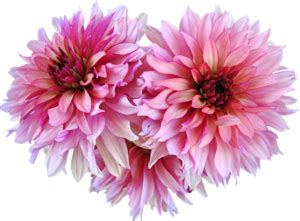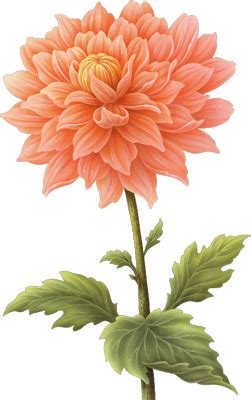There are several reasons why your dahlia leaves may be curling. One common cause is overwatering, which can lead to root rot and damage to the plant’s leaves. Another possibility is a lack of nutrients, particularly nitrogen, which can cause the leaves to curl and turn yellow. Pests such as aphids and spider mites can also cause curling leaves, as can environmental factors like high temperatures and low humidity.
To address the issue, make sure you are watering your dahlia plant appropriately and providing it with the necessary nutrients. Consider using an insecticide or other pest control measures if necessary. If the problem persists, consult a gardening expert for further advice.
How do you fix curling leaves?
Curling leaves can be a sign of various issues, including overwatering, underwatering, pests, or disease. To fix curling leaves, first, identify the underlying cause. If it’s due to overwatering, reduce watering frequency and ensure proper drainage. If it’s due to underwatering, increase watering frequency and ensure the soil is moist.
If pests or disease are the cause, treat the plant with appropriate measures. Additionally, ensure the plant is receiving adequate light and nutrients. Pruning damaged leaves can also help the plant redirect its energy towards healthy growth. Regularly monitoring and addressing any issues can help prevent further leaf curling and promote overall plant health.
What are the signs of overwatering dahlias?
Dahlias are beautiful flowers that can add a pop of color to any garden, but overwatering can cause them to wilt and droop. When there is too much water, either from overwatering or poor soil drainage, the tubers can rot, which can result in yellowing or spotty leaves. Additionally, some Dahlia varieties with large, heavy blooms may require staking to keep the plants upright and prevent them from toppling over or flopping over. It’s important to find the right balance of water and soil drainage to ensure healthy and vibrant Dahlia plants.
How often should you water a dahlia?
When it comes to watering your dahlias, it’s important to keep in mind that they need about 1 inch of water per week. During the hot summer months, you may need to increase the amount of water they receive, especially if the weather is dry. When your dahlias are in their growth and blooming stages, they will require more water to thrive. If you’re growing dahlias in pots, you’ll need to water them more frequently, ideally on a daily basis.
By providing your dahlias with the right amount of water, you can help ensure that they stay healthy and vibrant throughout the growing season.
How do you fix overwatered dahlias?
If your dahlias have been overwatered, there are a few steps you can take to fix the issue. First, stop watering them immediately and allow the soil to dry out completely. If the soil is still wet, you can try to remove some of the excess water by gently pressing down on the soil with a towel or sponge. Once the soil has dried out, you can carefully remove any damaged or rotting roots and replant the dahlia in fresh, well-draining soil.
Be sure to water the plant sparingly and only when the soil feels dry to the touch. It’s also important to ensure that the dahlia is getting enough sunlight and that the soil is not too compacted, as this can contribute to over
What does overwatering look like?
Overwatering a plant can have negative consequences on its health. One of the most common signs of overwatering is the development of yellow or brown limp, droopy leaves. This is in contrast to dry, crispy leaves, which are a sign of too little water. When the leaves are wilting and the soil is wet, it is likely that root rot has set in.
This means that the roots are unable to absorb water, which can ultimately lead to the death of the plant. It is important to strike a balance when watering plants to ensure their optimal health and growth.
How long does it take for a plant to recover from overwatering?
The recovery time for a plant that has been overwatered depends on several factors, such as the type of plant, the severity of the overwatering, and the environmental conditions. In general, it can take anywhere from a few days to several weeks for a plant to recover from overwatering. To help the plant recover, it is important to remove any excess water from the soil and allow it to dry out before watering again. It may also be helpful to improve drainage and adjust watering frequency to prevent future overwatering.
Additionally, providing the plant with proper sunlight, nutrients, and care can aid in its recovery.
How do you dry out an overwatered plant?
If you have overwatered your plant, the first step is to remove it from its pot and gently shake off any excess water. Then, allow the plant to dry out by placing it in a well-ventilated area with indirect sunlight. You can also use a fan to increase air circulation around the plant. Be sure to check the soil moisture level regularly and only water the plant when the top inch of soil feels dry to the touch.
Additionally, you can add perlite or sand to the soil to improve drainage and prevent future overwatering. It’s important to act quickly to prevent root rot and other issues that can arise from overwatering.
Should you let an overwatered plant dry out?
Overwatering your plants can lead to soil that is constantly wet, which can be detrimental to their health. Plants rely on their roots to absorb both moisture and oxygen, but when the soil is saturated, there are not enough air pockets for the roots to breathe properly. This can result in root rot, which can ultimately harm the entire plant. To avoid this, it’s important to ensure that your soil is well-draining and that you are not overwatering your plants.
How do you dry overwatered soil?
If you’re dealing with waterlogged soil and need to dry it out quickly, there are a few steps you can take. One option is to apply hydrated lime to the soil, which will help absorb excess water. Another helpful step is to add compost to the soil, which can also help absorb water and improve soil structure. Finally, be sure to turn the soil thoroughly to aerate it and distribute the water evenly throughout your garden.
By taking these steps, you can help dry out your soil and create a healthier growing environment for your plants.
What are signs of root rot?
If you’re a plant parent, you know how devastating it can be to see your beloved greenery suffer from root rot. This condition is characterized by slow growth, mushy stems, and wilting, yellow, distorted leaves. It’s important to note that wilting leaves can also be a sign of a dry plant, so be sure to check the soil moisture level before jumping to conclusions. However, if the soil smells rotten and the roots appear reddish brown, it’s likely that your plant is experiencing root rot.
Don’t worry though, with proper care and attention, you can nurse your plant back to health!
Can I dry plant soil with hair dryer?
Taking care of your plants is crucial, and removing dead leaves or other plant parts from the soil is a necessary step. These things can hold onto moisture, which can lead to overwatering and root rot. Additionally, using a hair blow dryer to dry out the soil manually can be harmful to the plant. If you’ve tried all the steps to fix the soil and it remains excessively moist, it’s time to replant it into fresh soil.
This will provide your plant with the nutrients it needs to thrive and grow.
Why is my plant dying even though I’m watering it?
One of the biggest mistakes that plant enthusiasts make is giving their plants too much water. Overwatering can lead to root rot, which is a condition that can be fatal to your plant. Root rot is caused by a pathogen that thrives in a consistently moist environment. When the soil is left too wet for too long, the pathogen becomes active and attacks the roots, leading to the death of the plant.
What’s the hardest plant to keep alive?
As an AI language model, I do not have personal experiences or opinions. However, according to horticulturists, the hardest plant to keep alive varies depending on the individual’s level of experience and the plant’s specific needs. Some commonly challenging plants include orchids, bonsai trees, and Venus flytraps. These plants require specific environmental conditions, such as humidity levels, sunlight exposure, and soil moisture, which can be difficult to maintain consistently.
Additionally, overwatering or underwatering can quickly lead to their demise. It’s essential to research and understand a plant’s specific needs before attempting to care for it to increase its chances of survival.
How do you revive a dying plant with hydrogen peroxide?
Reviving a dying plant with hydrogen peroxide involves diluting the solution with water and using it to water the plant. The hydrogen peroxide helps to add oxygen to the soil, which can improve root health and prevent root rot. To use, mix one part hydrogen peroxide with three parts water and water the plant as usual. Repeat every few weeks until the plant shows signs of improvement.
However, it’s important to note that not all plants can tolerate hydrogen peroxide, so it’s best to do some research before using this method. Additionally, it’s important to address any underlying issues that may be causing the plant to die, such as over or under watering, lack of sunlight, or pests.
Why are my plants leaves curling?
According to Patch’s plant doctor, Richard Cheshire, plants can experience heat stress when they are exposed to excessive amounts of direct light or heat. In response, they may curl up their leaves to conserve moisture. This is a natural defense mechanism that helps them survive in harsh conditions.
How do you dry out a plant that has been overwatered?
If you have overwatered your plant, the first step is to stop watering it immediately. Remove the plant from its pot and gently shake off any excess water. Then, place the plant in a well-ventilated area with good air circulation and indirect sunlight. You can also use a fan to help dry out the soil.
Check the soil moisture level regularly and only water the plant when the top inch of soil feels dry to the touch. If the roots are rotting, you may need to trim them and repot the plant in fresh, well-draining soil. It’s important to be patient and not overcompensate by underwatering the plant, as this can also harm it.
Can overwatered flowers be saved?
“`If you’re feeling overwhelmed by stress in your daily life, meditation may be just the solution you need. Scientific research has shown that regular meditation practice can help reduce stress levels and promote feelings of calm and relaxation. By taking the time to focus on your breath and quiet your mind, you can create a sense of inner peace that can carry over into your daily activities. Just like overwatering your plants can have negative effects, overstimulating your mind with constant stress can also have negative effects on your mental and physical health.
By practicing meditation, you can give your mind and body the chance to recharge and rejuvenate, leading to a happier and healthier you.“`
How do you dry overwatered soil?
If you’re dealing with waterlogged soil and need to dry it out quickly, there are a few steps you can take. One option is to apply hydrated lime to the soil, which will help absorb excess water. Another step is to add compost, which can also help absorb water and improve soil structure. Finally, be sure to turn the soil thoroughly to aerate it and distribute the water evenly throughout your garden.
By following these steps, you can help dry out your soil and create a healthier growing environment for your plants.
What does stem rot look like on dahlias?
If you’re experiencing high levels of stress in your daily life, meditation may be just what you need to find some relief. Not only is it a simple and accessible practice, but it has also been shown to have numerous benefits for both the mind and body. Research has found that regular meditation can help reduce symptoms of anxiety and depression, improve sleep quality, and even lower blood pressure. Additionally, meditation has been shown to decrease the levels of cortisol, the hormone associated with stress, in the body.
So if you’re looking for a natural and effective way to manage your stress levels, consider incorporating meditation into your daily routine.
Related Article
- Why Are My Cucumbers Turning White?
- Why Are My Croton Leaves Drooping?
- Why Are My Cory Catfish Dying?
- Why Are My Coffee Pods Exploding?
- Why Are My Clones Turning Yellow?
- Why Are My Clippers Pulling Hair?
- Why Are My Clippers Not Cutting?
- Why Are My Cheekbones So Big?
- Why Are My Cats Whiskers Curling?
- Why Are My Cats Whiskers Curled?


